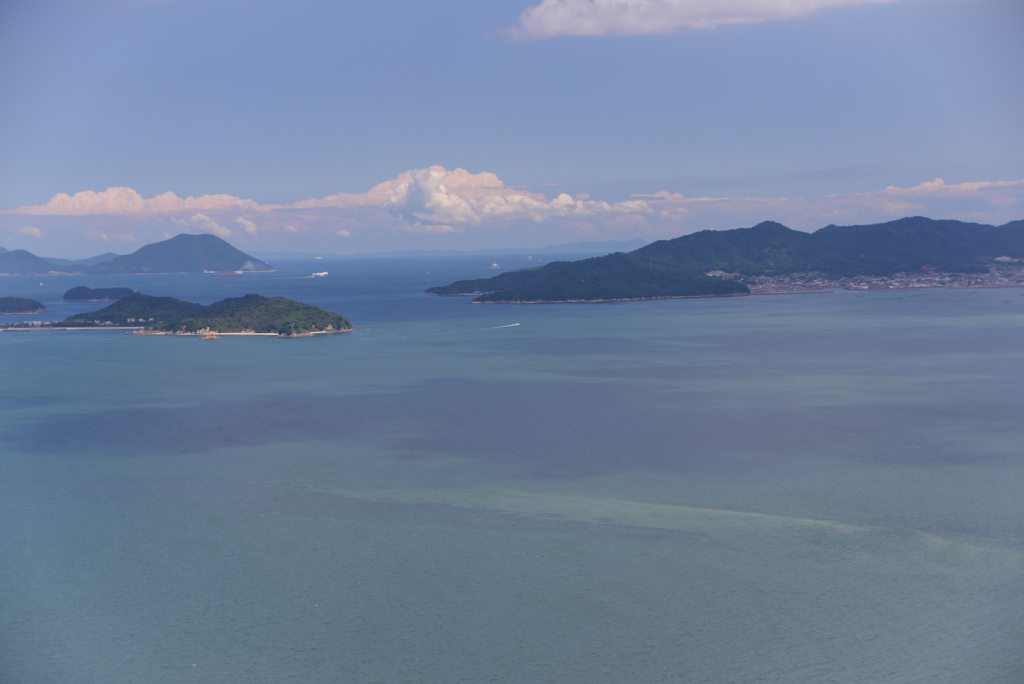I first laid eyes upon the art islands during the 2019 Setouchi Triennale. It was early August and I was standing at the port in Takamatsu, a coastal city in northern Shikoku, looking out upon the sweeping inland seascape. The setting was at once arresting; a work of natural art itself.
The Seto Inland Sea stretched out before me, a tranquil carpet of deep blue. The art islands, the protruding pine-covered tips of a long-submerged mountain range, and a few scattered boats gleaming an opalescent white, were the only disturbances on the water’s velvety surface. The backdrop of distant mountains was silhouetted behind a mid-summer haze. It was a living, breathing watercolor painting. Even the sun scything down from a cloudless sky at temperatures high enough to make a man of my pasty complexion melt, couldn’t take me out of my silent reverie.
With my expectations soaring to new heights, I devised a simple plan for the trip: explore as much of the art islands as I could in two days, brush up on my paltry knowledge of contemporary art, and (hopefully) gain a better understanding of what the Setouchi Triennale is all about.
The 2019 Setouchi Triennale
While the rest of Japan has been marching towards an urban future, there has been a limited amount of industrialization carried out on the art islands; this is one of the primary reasons they have maintained such a raw state of natural beauty. Though on the flip side, the islands and the local populous are aging rapidly. The Setouchi Triennale is a spectacular showcase of contemporary art, but more importantly, it’s a revitalization project aimed at breathing new life into the region, with each artwork designed to work in tandem with that vision.
There is a lot of artwork on show, and one couldn’t hope to see it all in one day, or even one trip. But if you can make time to get to the festival – and I suggest that you do – here is a selection of artworks that you ought to check out:
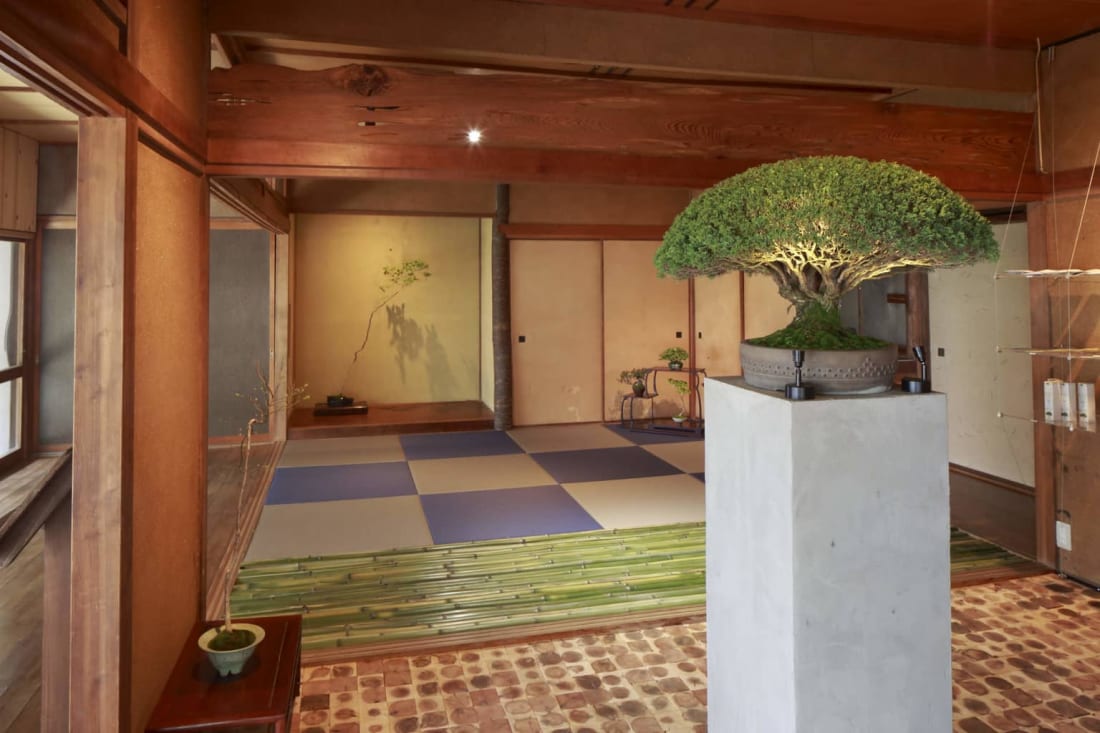
“BONSAI deepening roots” | Artist: Masashi Hirao × SETOUCHI COGEIZ | Photo by Keizo Kioku
Bonsai Deepening Roots (Megijima)
The “Bonsai Deeping Roots” artwork, located near the port on Megijima island, is showcased inside a gentrified old homestead. The interior design is emblematic of traditional Japanese modular architecture: cubed shape, muted colors, tatami flooring, shoji door frames and sliding fusuma doors. What visitors come to see however, are the collection of carefully tended-to bonsai botanicals spread around the floorspace and adjacent garden, and the exhibit’s centerpiece, a 60-year-old miniature beech tree.
Bonsai is a popular artform in Kagawa Prefecture, hence the reference to its “roots.” The creator of the exhibit is a young Japanese artist, Hirao Masashi, whose inspired design is a charming ode to the local craft.
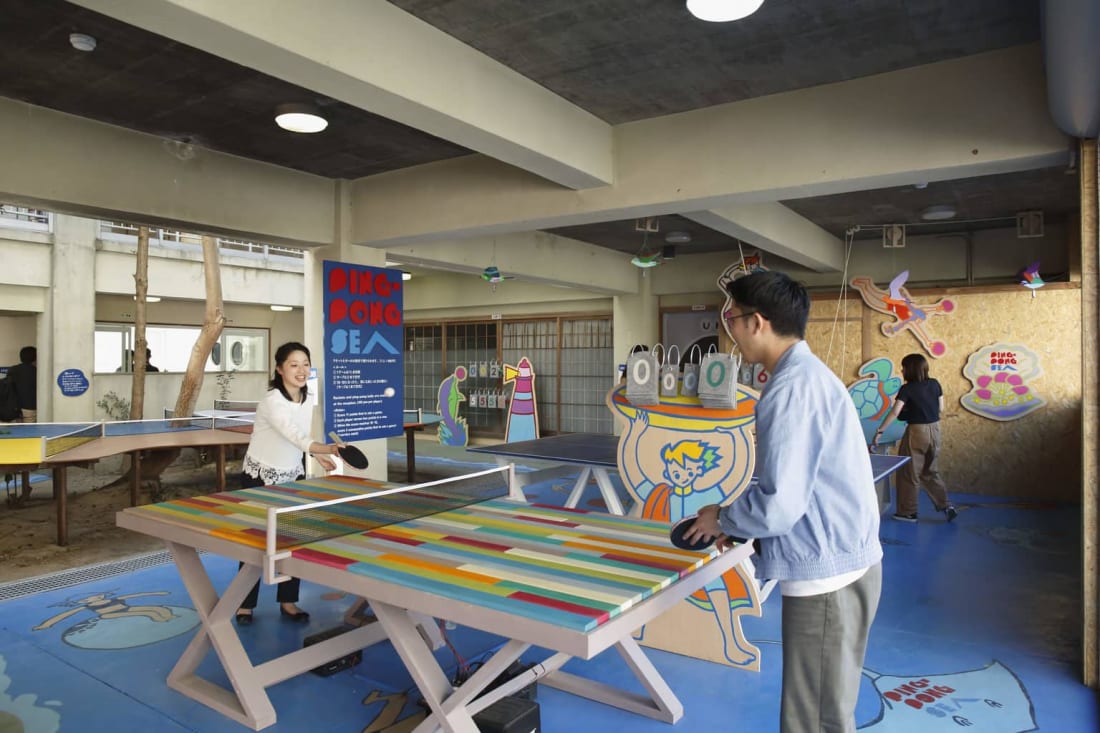
Little Shops on the Island “Ping-Pong Sea” | Artist: Rintaro Hara+Yu Hara | Photo by Keizo Kioku
Little Shops on the Island “Ping Pong Sea” (Megijima)
Little Shops on the Island is an initiative driven by the goal of making the islander’s lives more convenient. To that end, abandoned houses, schools and shops have been reinvented as amenities, like laundromats, cafés and hair salons.
In some cases, they have also been reinvented as entertainment outlets for visitors. The “Ping Pong Sea” exhibition, by Rintaro and Yu Hara, is hosted on the ground floor of an abandoned elementary school; at first thought, a rather melancholic setting for a work of interactive art. But in reality, it has ushered in an air of rejuvenation.
Among the washed-out walls of cracking paintwork, sit ping pong tables of different shapes, sizes and increasingly eccentric color palettes (which you can play on), childlike art and plywood cut-outs, and a thicket of trees climbing toward the sky in the school courtyard. Together they breathe life into a school that will, most likely, never again see the light of day.
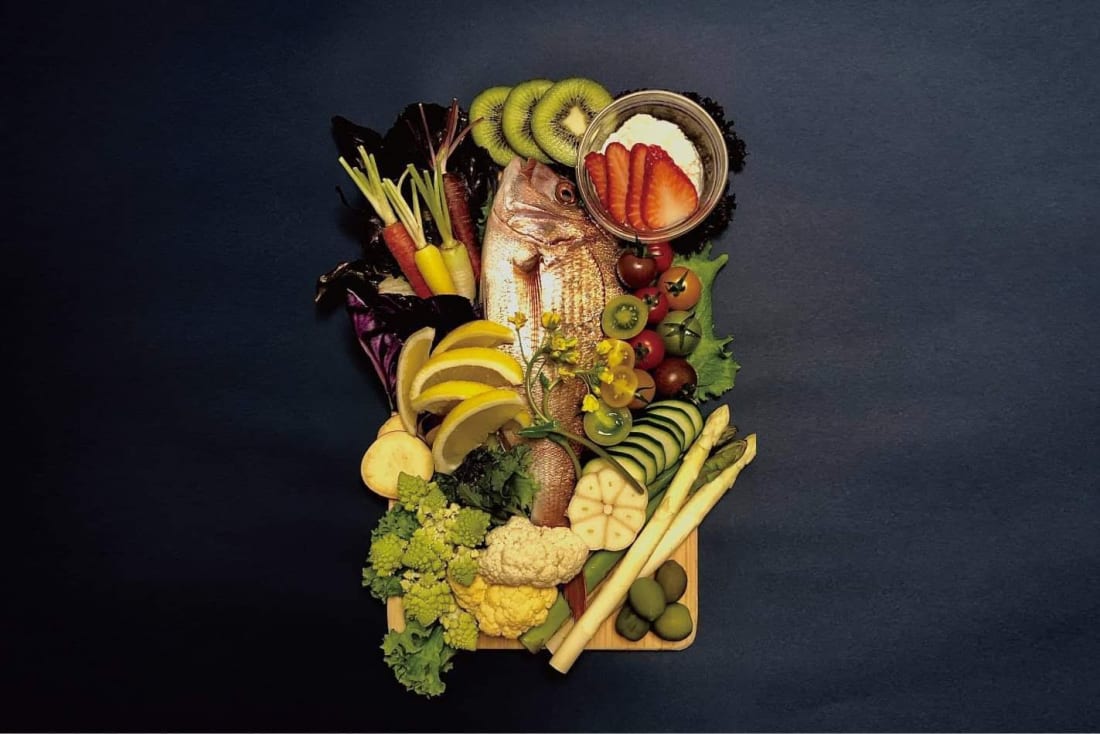
“Setouchi gastronomy” | Artist: EAT&ART TARO
Setouchi Gastronomy (Megijima)
EAT&ART TARO’s “Setouchi Gastronomy” is an exploration of Megijima’s art and culture through local cuisine. A deftly prepared three-course meal using local produce is served at low tables on the site of acclaimed Argentinian artist, Leandro Erlich’s, 2016 artwork: “The Presence of Absence.” The meal is accompanied by a tutorial from the chef (with a screen providing English translation).
Though the food varies based on seasonal ingredients, the summer feast included: sea bream carpaccio; chicken-on-the-bone with locally-grown veg, tartar and mustard; and a dish of cold somen noodles and eggplant in a tomato-based sauce (a local favorite that, to my surprise, was decidedly reminiscent of Italian flavors).

“ISLAND THEATRE MEGI” | Artist: Yoichiro Yoda | Photo by Yasushi Ichikawa
ISLAND THEATRE MEGI (Megijima)
ISLAND THEATRE MEGI is a time portal to the world of mid-20th century American cinema. Previously a disused storehouse, the exterior of the installation is still relatively unassuming, with little more than an old-fashioned, moving-pictures signboard indicating what lies behind the corrugated steel frame.
Inside is a world unto itself. The lobby is dressed in impressionistic paintings of Hollywood Legends from Clarke Gable to Jack Nicholson. A staff member appropriately attired in evening wear and a black waistcoat stands behind a 1950’s popcorn machine. Upstairs a movie theatre in the style of an old Manhattan picture house plays a catalogue of movies from the extensive repertoire of Charlie Chaplin. And all this created by just one artist, Yoichiro Yoda.
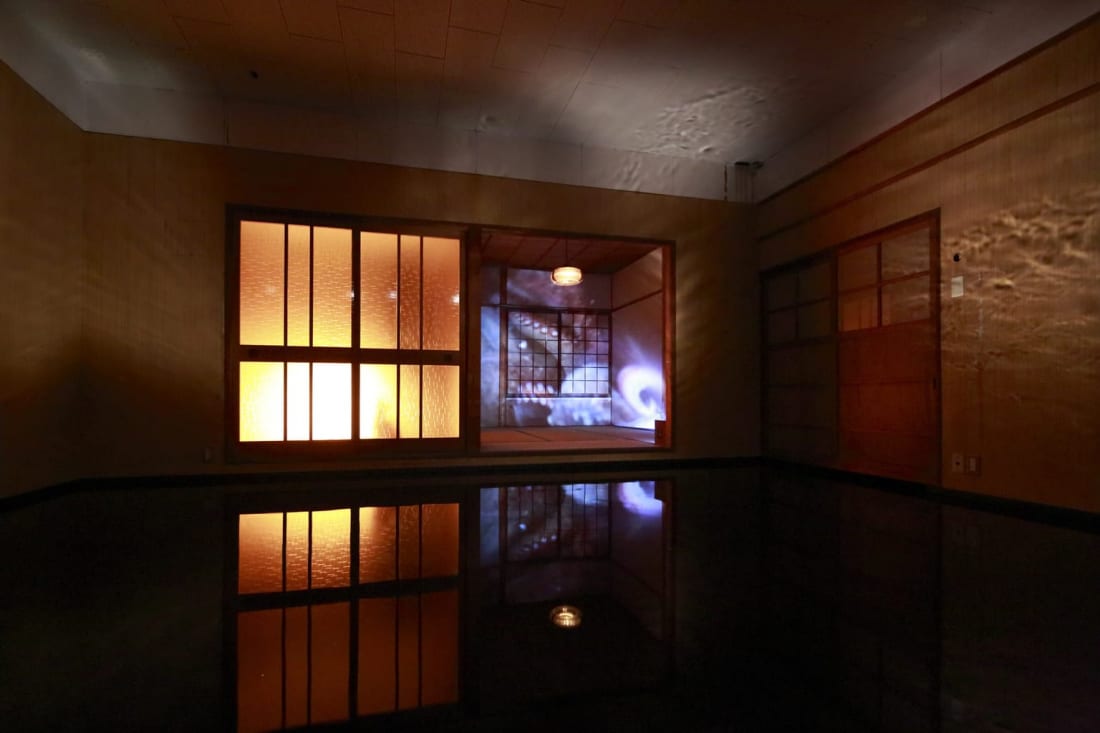
“The Sea Within – The See Within” | Artist: Sarah Westphal | Photo by Keizo Kioku
The Sea Within – The See Within (Ogijima)
On to Ogijima now, a small island neighboring Megijima which displays an eclectic selection of artworks scattered along steep walking trails throughout the old coastal village. “The Sea Within – The See Within” exhibit is immediately transfixing, and I imagine it would offer a welcome reprieve if you are in Ogijima on a particularly busy day.
German artist Sarah Westphal opted for an abandoned house as the stage for her latest masterpiece.
You walk through a curtain which blocks out all light from the outside world and take a seat on a bench running along the wall in front of you. A projection in the next room plays a video of an octopus writhing around, which is in turn reflected on the surface of the pool of water at your feet. All that can be heard is the faint rattling of a fan in the background. It’s bizzare yes, yet inescapably meditative.
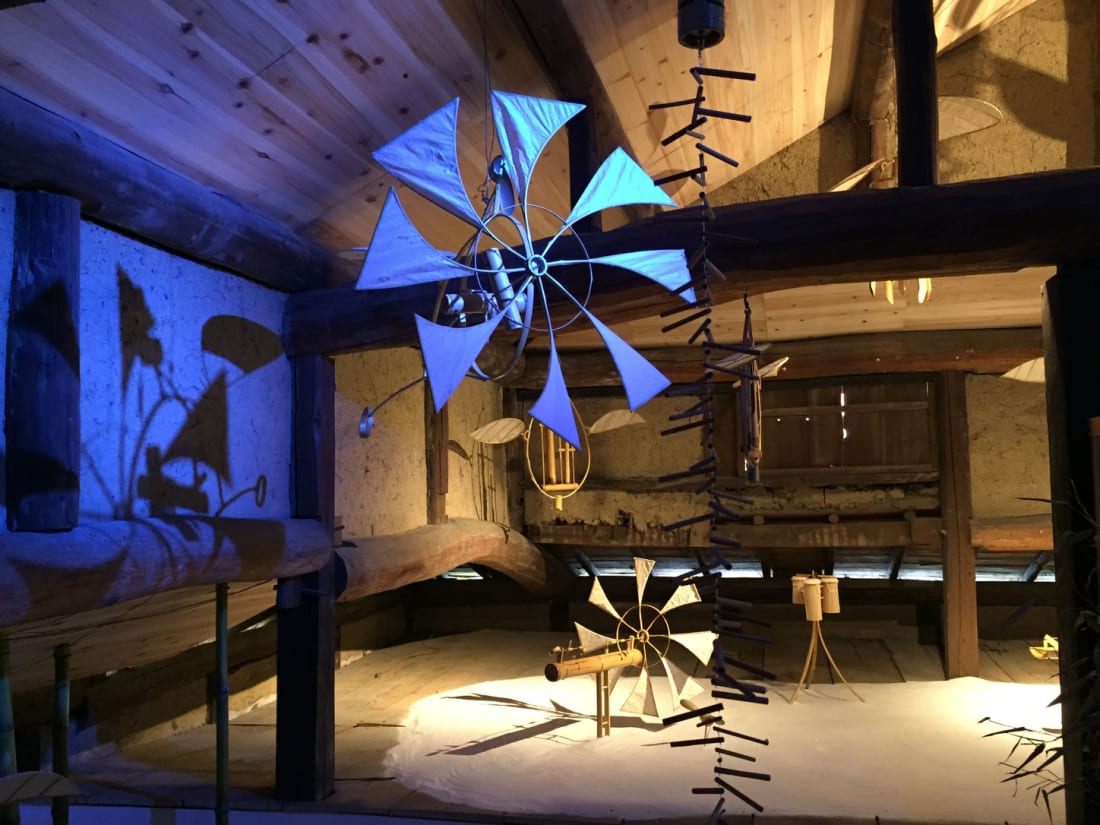
“Akinorium” | Artist: Akinori Matsumoto | Photo by Yasushi Ichikawa
Akinorium (Ogijima)
The eponymous Akinorium, created by Japanese artist, Akinori Matsumoto, is a collection of wooden “sound objects” decorating the upstairs loft of a small disused building. The objects, dangling from the roof and peppering the floorboards, operate as instruments in a miniature wooden orchestra, clicking and jingling in a continuous rhythmic loop. Each object has been carefully crafted to create its own distinct sound and movement patterns. It’s as pleasing to the eye as it is the ear.
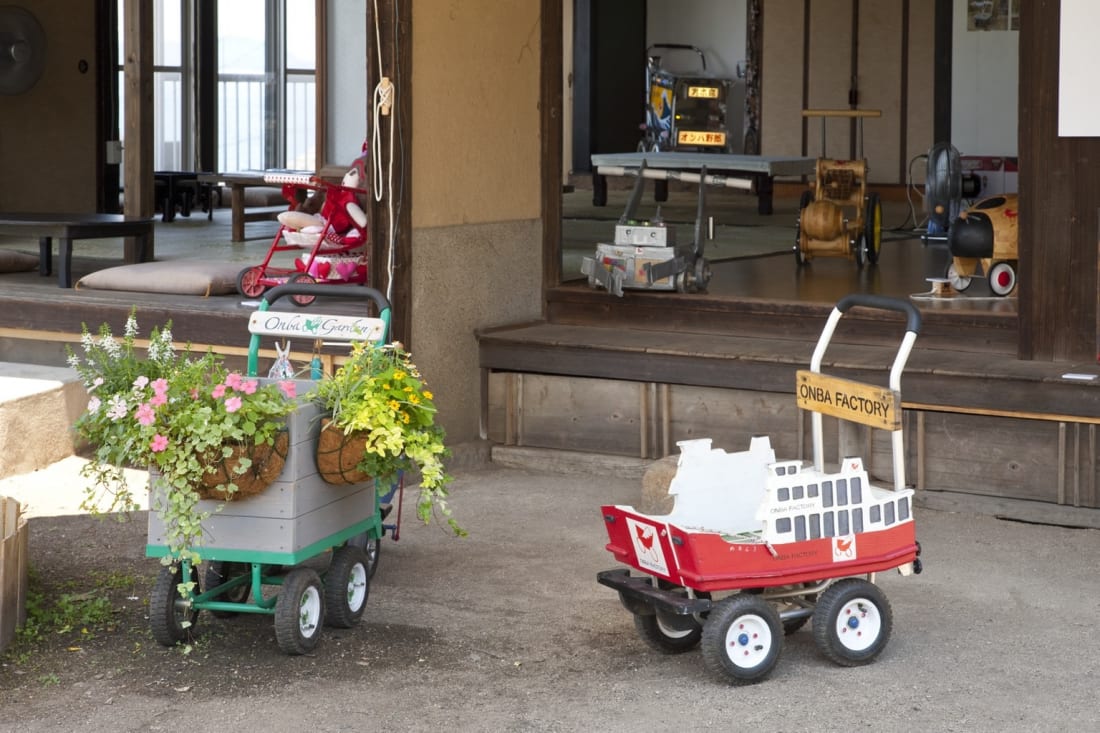
“ONBA・FACTORY” | Photo by Osamu Nakamura
ONBA FACTORY (Ogijima)
Onba (strollers) are crucial to the inhabitants of Ogijima, particularly the elderly who use them as walking aids to navigate the village’s winding paths (of which there are no shortage). The “ONBA FACTORY” exhibit showcases ornamental onba, each one created with a unique design that is specific to an individual inhabitant of Megijima: a steam train, a tractor, a pram with a wicker basket. It’s one the finest examples of how the Triennale can offer real, tangible benefits to local lives.
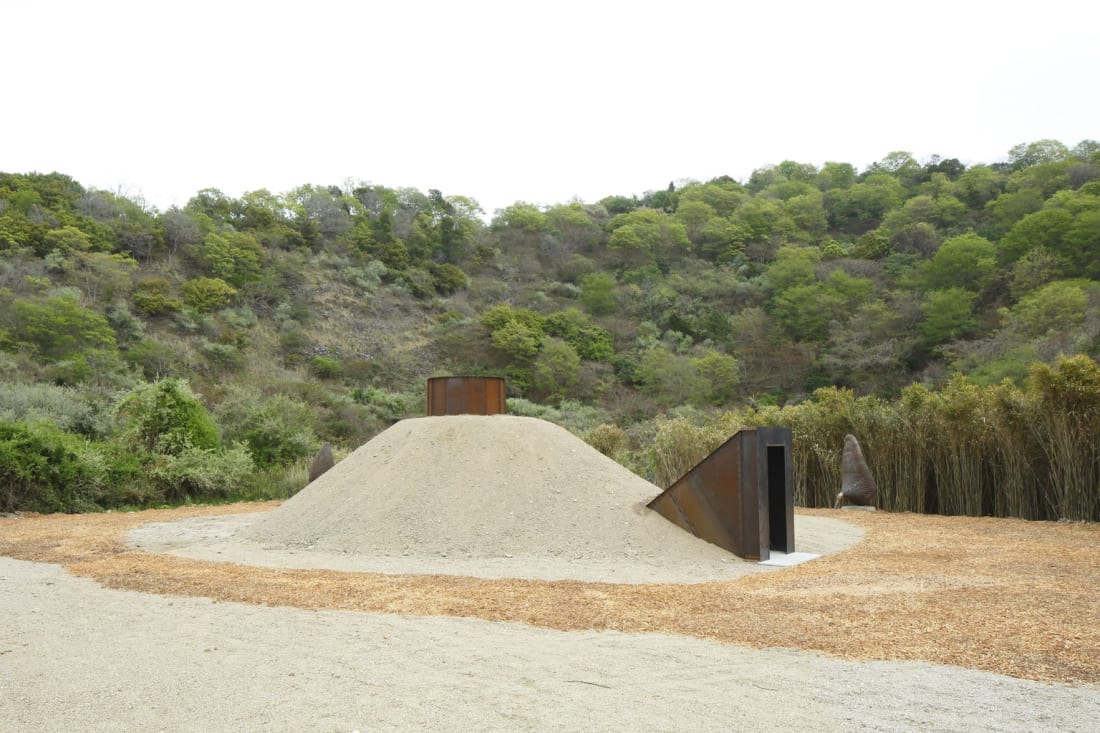
“Yamagoe-do (Mountain Voice cavern)” | Artist: Toshimitsu Ito | Photo by Keizo Kioku
Mountain Voice Cavern and Shiomimi-so (Shodoshima)
Shodoshima, the second largest of the Inland Sea’s 3,000-plus islands, is considerably less easy to navigate than Megijima and Ogijima (a car or bus is your best bet). However, there are two artworks on the island’s Mito Peninsula by Toshimitsu Ito and the Hiroshima University Art Faculty that are worth your patronage if you venture down this way.
The “Mountain Voice Cavern” sits in an old quarry, which flourished throughout much of the last century. After the business ran dry, forests reclaimed the area. The artwork, resembling an underground war bunker, has an ear-shaped protrusion which feeds down to the underground chamber. The ear catches the sounds of nature – the “voice of the mountains” – transferring them into echoes throughout the chamber.
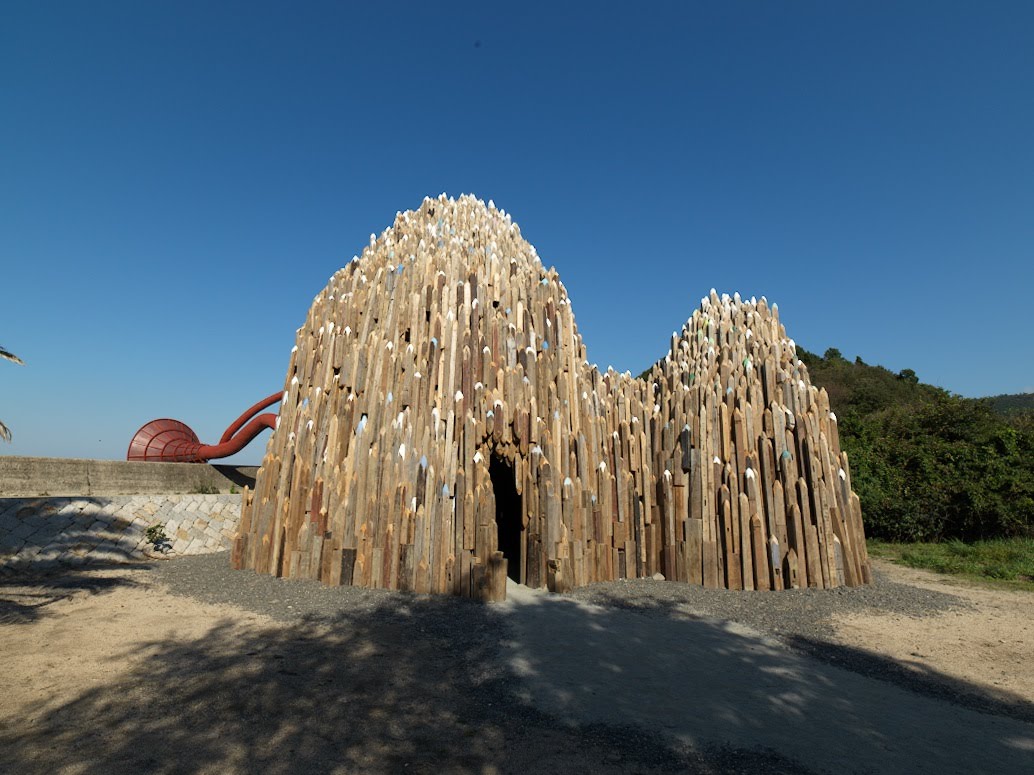
“Shiomimi-so” | Artist: Toshimitu Ito + Kana Kou + Hiroshima City University, Faculty of Arts | Photo by Yasushi Ichikawa
The sister piece, “Shiomimi-so,” is a cavernous wooden structure erected from reused materials on the peninsula’s coast. It looks like a mythical dwelling, once inhabited by the patriarchs of some long-lost kingdom; a fact heightened by a giant horn appendage which snakes out towards the sea. The horn amplifies the sound of waves crashing upon the shore, which softly reverberate around the cavern interior.
Both pieces clearly symbolise that, for better or worse, nature still rules the roost on Japan’s fabled art islands.
The Setouchi Triennale takes place every three years, with a spring, summer and autumn edition. This year’s autumn edition is from September 28–November 4.
Feature image: Kathy Matsunami | Shutterstock
Updated On December 26, 2022

